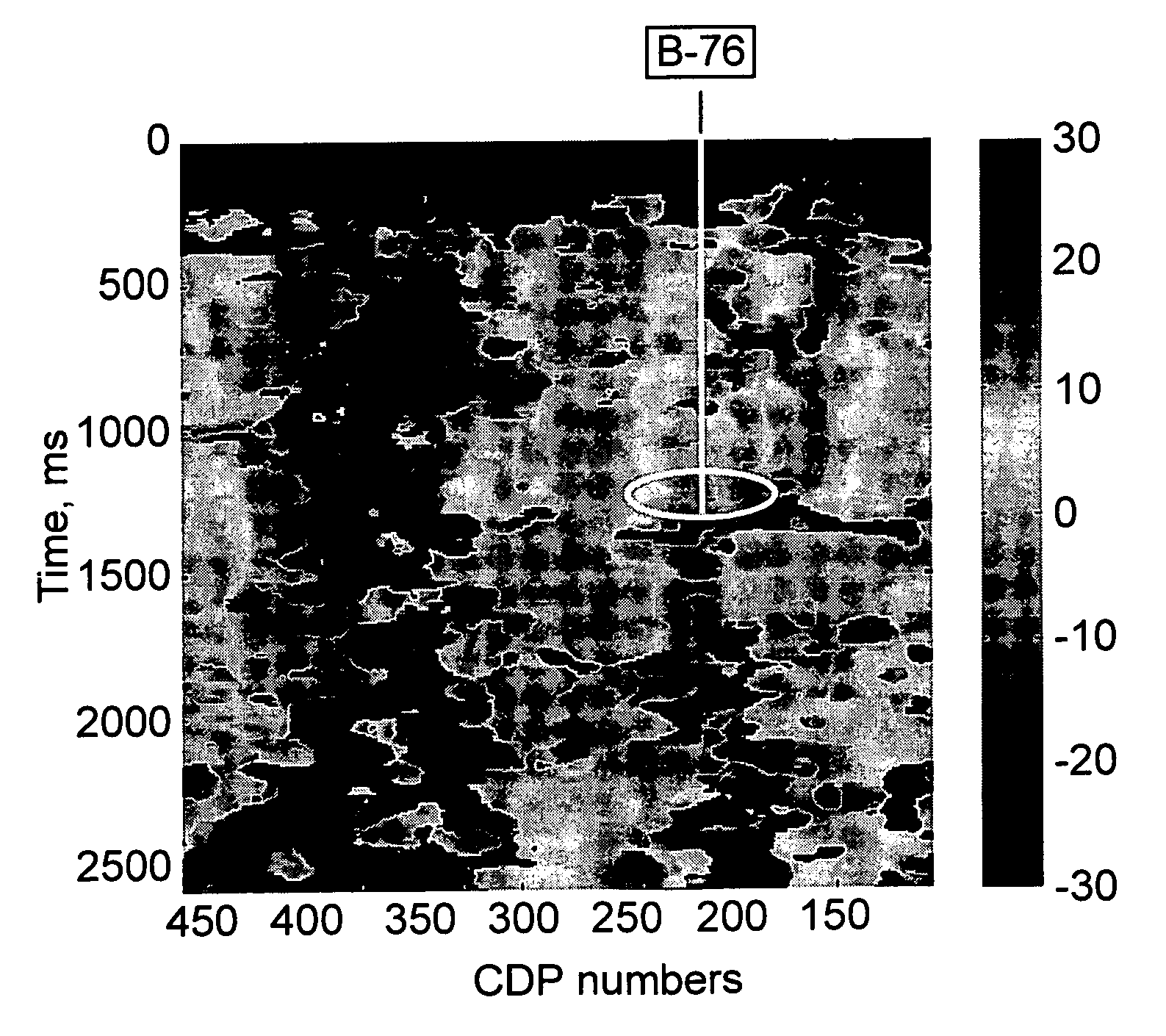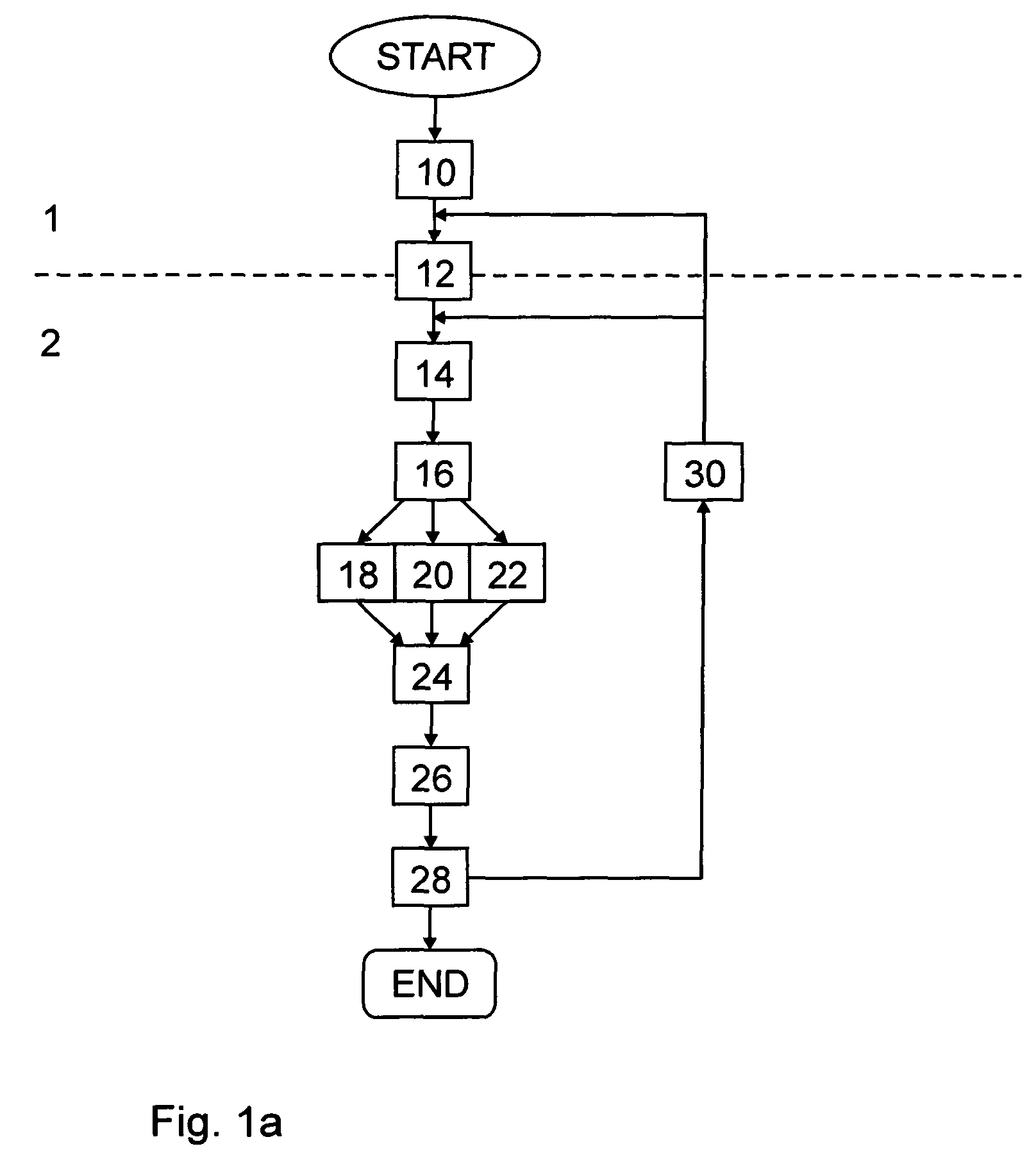Local dominant wave-vector analysis of seismic data
a seismic data and local dominant wave technology, applied in the field ofsignal processing, can solve the problems of insufficient interpretation, inability to provide sufficient, and inability to see subtle features that the interpreter needs to see, and achieve the effect of better visualization of frequency dependent features
- Summary
- Abstract
- Description
- Claims
- Application Information
AI Technical Summary
Benefits of technology
Problems solved by technology
Method used
Image
Examples
first embodiment
[0060]Referring to FIG. 1a, a simplified flow diagram of a method for processing multi-dimensional signal data to determine frequency dependent features therefrom according to the invention is shown. The multi-dimensional signal data received for processing—box 10—comprise, for example, two- or three-dimensional data indicative of a characteristic of an object or physical event. Such data are, for example, seismic data—seismic sections—indicative of structural features in the ground of an investigated area as will be shown in an example below. The multi-dimensional data are space-dependent, i.e. the signal data are dependent upon two or three space coordinates or, alternatively, time-space-dependent, i.e. the signal data are dependent upon time and one or two space coordinates. As will become evident to those of skill in the art, the method for processing multi-dimensional signal data according to the invention is not limited to seismic data, but is beneficial for extracting frequen...
second embodiment
[0062]Referring to FIG. 1b, a simplified flow diagram of a method for processing multi-dimensional signal data to determine frequency dependent features therefrom according to the invention is shown. Here, the determination of secondary features is integrated into the method shown in FIG. 1a to replace the dominant feature at locations where the same is determined to be indicative of noise or an artifact. For simplicity, same reference numerals are used for same processing steps. Referring to box 40, a user determines if at a location the dominant feature is indicative of noise or an artifact. At such a location secondary features are determined corresponding to peak values smaller than the largest value of the second signal data—box 44. At each of these locations a wave-vector corresponding to the secondary features is determined—box 46—for replacing the wave-vector corresponding to the dominant feature in the following processing steps. Optionally, the secondary features are enhan...
third embodiment
[0063]Referring to FIG. 1d, a method for processing multi-dimensional signal data to determine frequency dependent features therefrom according to the invention is shown. Here, the received multi-dimensional data are three-dimensional—or higher. For simplicity, same reference numerals as in FIG. 1a are used for same processing steps. To reduce the requirements for computer memory and computing time it is possible, as outlined above, to divide the three-dimensional data into NSub two-dimensional “slices”—or sub-sections—through selected values of x, y, and z—box 50—and then to calculate the two dimensional space-frequency or time-space-frequency transform of each of the slices—box 12. The signal processing according to the boxes 14 and 16 are performed for each of the “slices”. Based on the wave-vectors of the NSub “slices” dip, frequency, and amplitude are then determined to provide dip, frequency, and amplitude volumes.
[0064]Obviously, the various embodiments of the method for proc...
PUM
 Login to View More
Login to View More Abstract
Description
Claims
Application Information
 Login to View More
Login to View More - R&D
- Intellectual Property
- Life Sciences
- Materials
- Tech Scout
- Unparalleled Data Quality
- Higher Quality Content
- 60% Fewer Hallucinations
Browse by: Latest US Patents, China's latest patents, Technical Efficacy Thesaurus, Application Domain, Technology Topic, Popular Technical Reports.
© 2025 PatSnap. All rights reserved.Legal|Privacy policy|Modern Slavery Act Transparency Statement|Sitemap|About US| Contact US: help@patsnap.com



